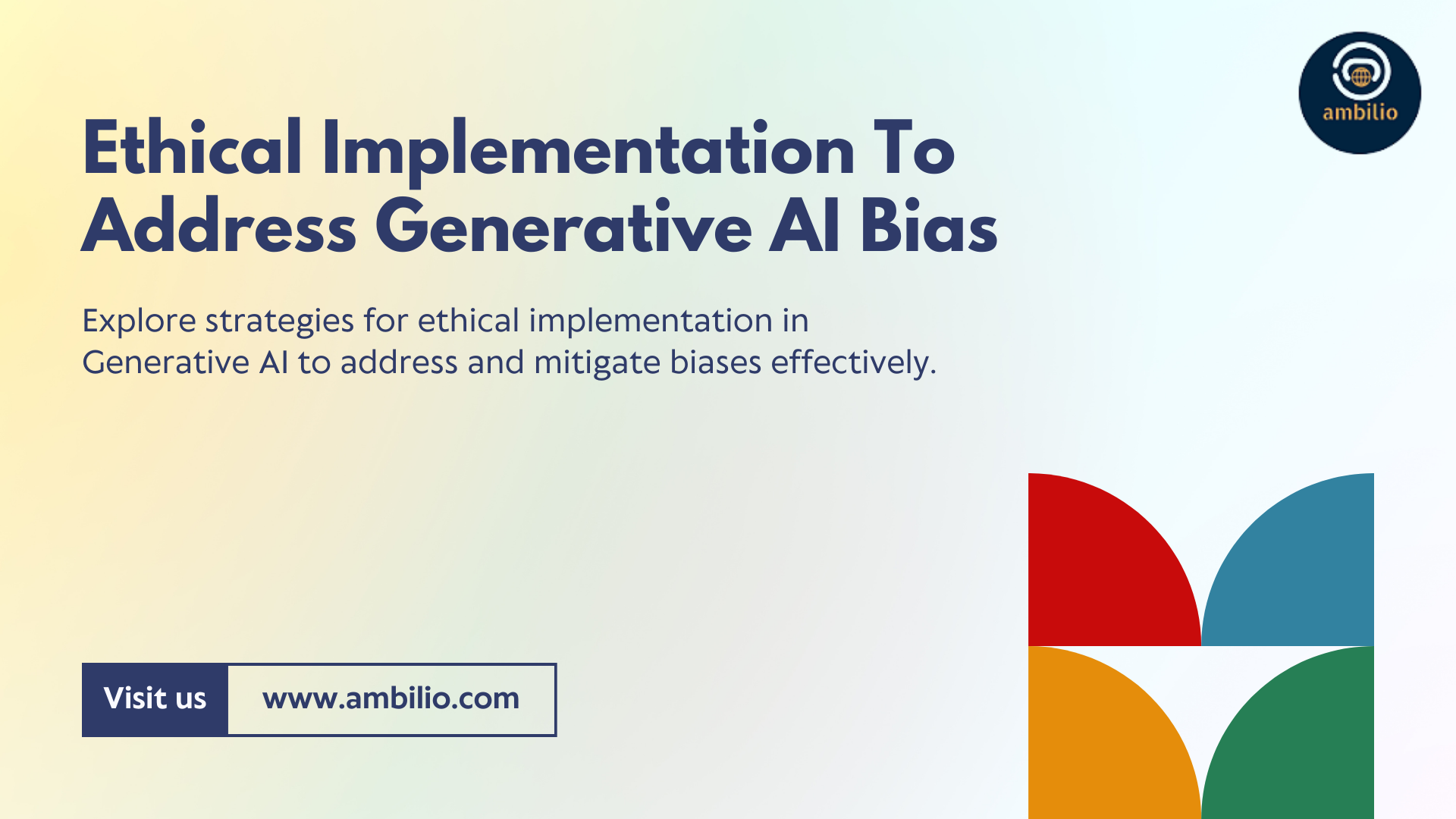Generative AI systems rely on extensive datasets that often mirror existing societal biases. These biases can result in outputs that reinforce stereotypes or perpetuate discrimination. For example, AI models trained on biased data might produce content reflecting gender or racial prejudices, such as chatbots making sexist jokes or recommending higher-paying jobs mainly to men. These issues underscore the critical need for ethical implementation to understand and address the sources and implications of biases, ensuring that generative AI operates fairly and inclusively.
Understanding Bias in Generative AI
Generative AI systems are trained on extensive datasets, which often reflect existing societal biases. These biases can manifest in various ways, leading to outputs that reinforce stereotypes or perpetuate discrimination. For instance, AI models trained on biased data might generate content that exhibits gender or racial prejudices. Examples include chatbots making sexist jokes or recommending higher-paying jobs primarily to men. Such occurrences highlight the importance of understanding and addressing the sources and implications of these biases.
Ethical Implementation Strategies to Mitigate Biases
Let us delve into the key ethical implementation strategies that help mitigate the Generative AI bias challenges.
1. Ensure Diverse and Representative Training Data
One of the fundamental steps in mitigating bias is to ensure that the training data is diverse and representative. Here’s how organizations can achieve this:
- Curate Inclusive Datasets: Develop datasets that reflect a wide array of perspectives, experiences, and demographics. This involves gathering data from different cultural, socio-economic, and geographical backgrounds to ensure a balanced representation.
- Engage Diverse Data Annotators: Employ annotators from varied backgrounds to label and annotate the training data. This practice helps in reducing the risk of embedding subjective biases into the model.
- Regular Monitoring and Updating: Continuously assess and update the training data to maintain its diversity and relevance. This ongoing process helps in addressing emerging biases and ensures that the data remains reflective of diverse viewpoints.
2. Implement Algorithmic Debiasing Techniques
Addressing biases within the model itself is crucial. Various algorithmic debiasing techniques can be employed:
- Adversarial Training: This method involves training the model with adversarial examples that challenge its biases, helping it learn to handle biased data more effectively.
- Calibrated Data Augmentation: By augmenting the training data in a controlled manner, organizations can balance the representation of different groups, thus mitigating biases in the model’s outputs.
- Counterfactual Evaluation: This technique involves testing the model’s outputs under hypothetical scenarios to evaluate its fairness and identify potential biases.
- Novel Approaches: Explore advanced techniques like causal modeling and disentangled representations. Causal modeling helps in understanding the underlying causes of biases, while disentangled representations separate different aspects of data to reduce bias.
3. Conduct Thorough Testing and Validation
Testing and validating generative AI models is essential to ensure they operate fairly:
- Extensive Bias Testing: Before deployment, models should be tested across various datasets and evaluation metrics to identify and address biases. This testing helps in understanding how the model performs in different scenarios.
- Human-in-the-Loop Testing: Engage diverse user groups in testing to gain insights into how the model’s outputs might be perceived by different demographics. This approach helps in identifying biases that might not be apparent in automated tests.
- Clear Guidelines and Protocols: Establish comprehensive guidelines and protocols for bias testing and mitigation. This includes defining what constitutes acceptable fairness and outlining procedures for addressing identified biases.
4. Prioritize Transparency and Explainability
Transparency and explainability are key to building trust and accountability in AI systems:
- Detailed Documentation: Provide thorough documentation of the training data sources, curation processes, and model architectures. This transparency helps stakeholders understand how the model was developed and its potential limitations.
- Model Interpretability: Utilize techniques such as feature importance analysis and saliency maps to make the model’s decision-making process more understandable. This interpretability allows users to see how and why certain outputs are generated.
- Engage with AI Ethics Communities: Collaborate with organizations and communities focused on AI ethics. This engagement provides valuable insights and helps in adopting best practices and emerging ethical standards.
5. Continuously Monitor and Refine
Ongoing monitoring and refinement are crucial for maintaining fairness and addressing emerging biases:
- Implement Continuous Monitoring: Set up systems to monitor the model’s outputs for biases and fairness issues on an ongoing basis. This real-time monitoring helps in promptly identifying and addressing any new biases that may arise.
- Establish Feedback Loops: Create mechanisms for collecting feedback from users and stakeholders. This feedback can guide the refinement and improvement of the model, ensuring that it continues to meet fairness standards over time.
- Leverage MLOps Practices: Utilize MLOps practices such as version control, continuous integration, and automated monitoring to manage model updates and ensure that fairness is maintained throughout the AI lifecycle.
Final Words
The ethical implementation of generative AI is essential for addressing biases and ensuring fairness in its applications. By adopting strategies such as curating diverse training data, implementing debiasing techniques, conducting thorough testing, prioritizing transparency, and continuously monitoring and refining models, organizations can navigate the complexities of generative AI responsibly. Although completely eliminating bias is a challenging goal, a proactive approach to bias mitigation is crucial for maximizing the benefits of generative AI while upholding societal values. As generative AI technology continues to evolve, prioritizing ethical considerations will enhance the quality of AI outputs and contribute to a more equitable and inclusive society.



